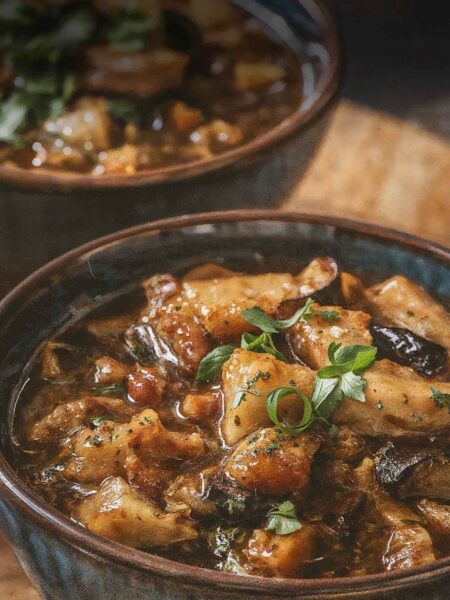Before diving into the delicious depths of kimchi soup, let’s talk about what you can pair with this flavorful dish. Whether it’s a cozy night in or hosting friends, complementary dishes can elevate your kimchi soup experience.
Steamed Rice: A classic side that balances the bold flavors of the soup. It soaks up all that delicious broth.
Korean Pancakes: These are light and crispy. They add a satisfying crunch. Plus, they are the perfect vehicle for dipping into the soup.
Pickled Vegetables: A side of pickled radishes or cucumbers can enhance the meal. The acidity cuts through the richness.
Crispy Tofu Bites: Extra protein never hurts. Tofu provides texture and absorbs flavors beautifully.
Side Salad: A simple mixed greens salad tossed with sesame dressing adds freshness. Keep it light to complement the soup’s richness.
Now, let’s immerse ourselves in the heart of this culinary delight.
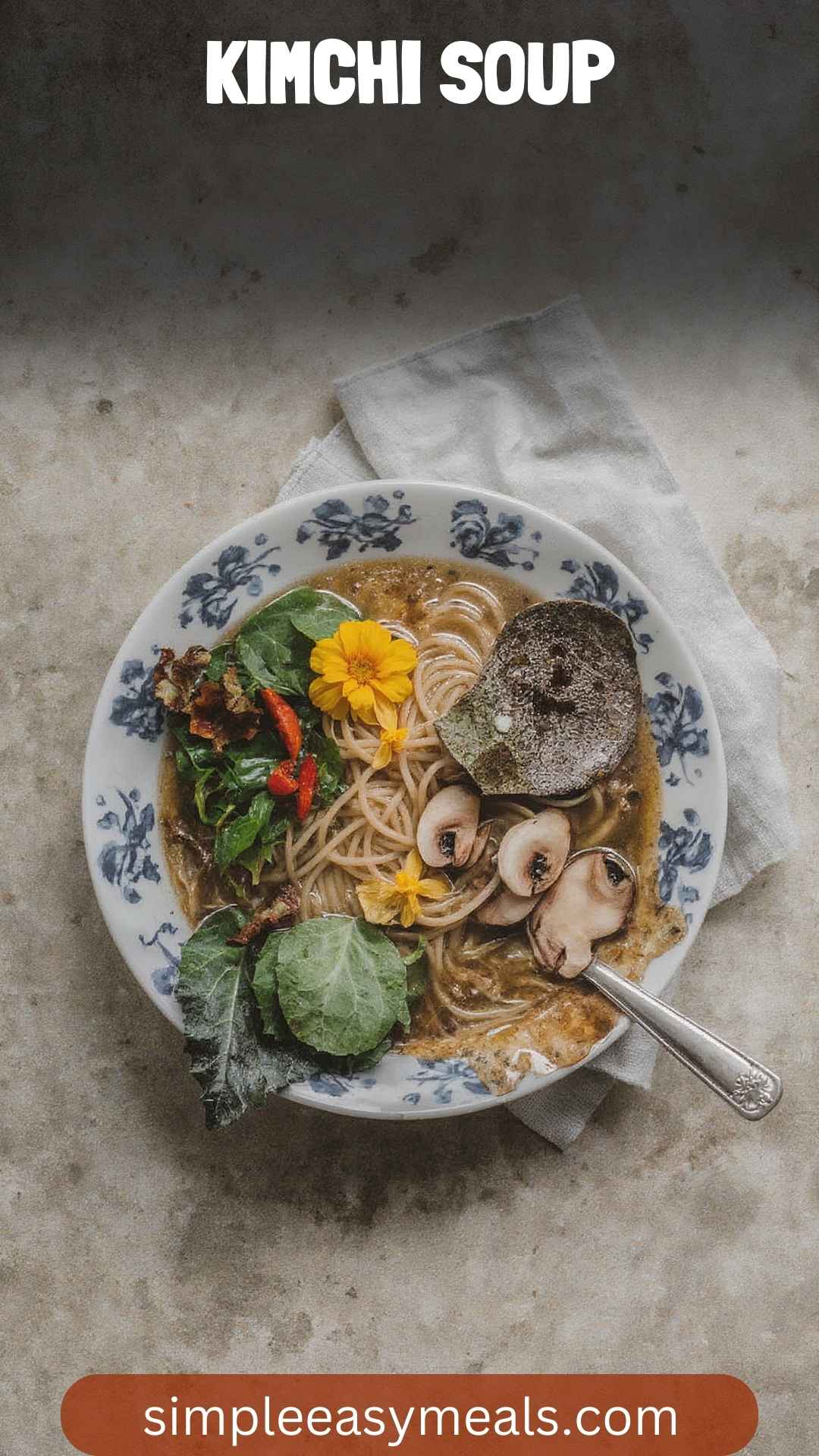
What is Kimchi Soup?
Kimchi soup, also known as “kimchi jjigae,” is a Korean stew made primarily from kimchi, tofu, and various vegetables. It’s a comfort dish that Koreans enjoy regularly, often served with a side of rice.
At its base, kimchi soup features the fermented delight of kimchi, packed with garlic and ginger, which brings a depth of flavor along with probiotics. Each bowl is a burst of spices, heat, and nutrition, making it a popular choice for a quick meal. The best part is that it’s incredibly versatile; you can modify the ingredients based on what you have on hand.
Why You’ll Love This Kimchi Soup Recipe
You might be wondering, what sets my kimchi soup apart? Allow me to share the highlights:
Flavor-Packed: With ingredients like ginger, garlic, and miso paste, each bite of this soup is layered with flavor. There’s heat, sweetness, and a hint of saltiness that dance together brilliantly.
Comfort Food: Especially on colder days or when you’re feeling under the weather, kimchi soup is like a warm hug in a bowl.
Nutritious: The health benefits of kimchi are extensive, loaded with probiotics that support gut health. Add in protein from tofu, and you have a wholesome meal in one bowl.
Quick to Prepare: You won’t be slaving away in the kitchen for hours. This dish comes together in under 30 minutes, which is a win if you’re busy or just feeling a bit lazy.
Customizable: If you’re not a fan of tofu, you can easily switch it out. Prefer more veggies? Throw in whatever you have!
Let’s dive into what you’ll need to whip up this comforting dish.
The Ingredients You Will Need To Make Kimchi Soup
Gather these ingredients to make a delicious kimchi soup that serves about 4 people:
3 tablespoons olive oil, ghee, or clarified butter: For sautéing and building flavor right from the start.
1 large onion, roughly chopped: Adds sweetness and depth.
5 cloves garlic, thinly sliced: Garlic lovers, rejoice! This is a must.
1½ tablespoons freshly grated ginger: For that warm, zingy flavor.
8 ounces mushrooms, thinly sliced: Adds earthiness and texture.
1 teaspoon crushed red pepper flakes: For those who crave some heat.
2/3 cup kimchi, drained, reserving 2 tablespoons juice: The star of the show—packed with flavor.
6 cups vegetable or water stock: Provides the base for our soup.
1 tablespoon honey or dark brown sugar: Balances the spice.
8 ounces broccoli florets: Fresh veggies for texture and nutrients.
1 teaspoon toasted sesame oil: A final flourish of flavor.
3 tablespoons miso paste: Adds umami richness.
Shoyu or soy sauce, as needed: For extra seasoning.
12 ounces extra-firm tofu, pan-fried (optional): Adds protein and heartiness.
To Serve You Will Need
Roasted cherry tomatoes: A sweet burst of flavor.
Shredded green onions: Freshness and a bit of crunch.
Toasted sesame seeds: For garnish and texture.
Shoyu: For those who like a bit more salt.
Squeeze of lime or lemon: Brightens the dish beautifully.
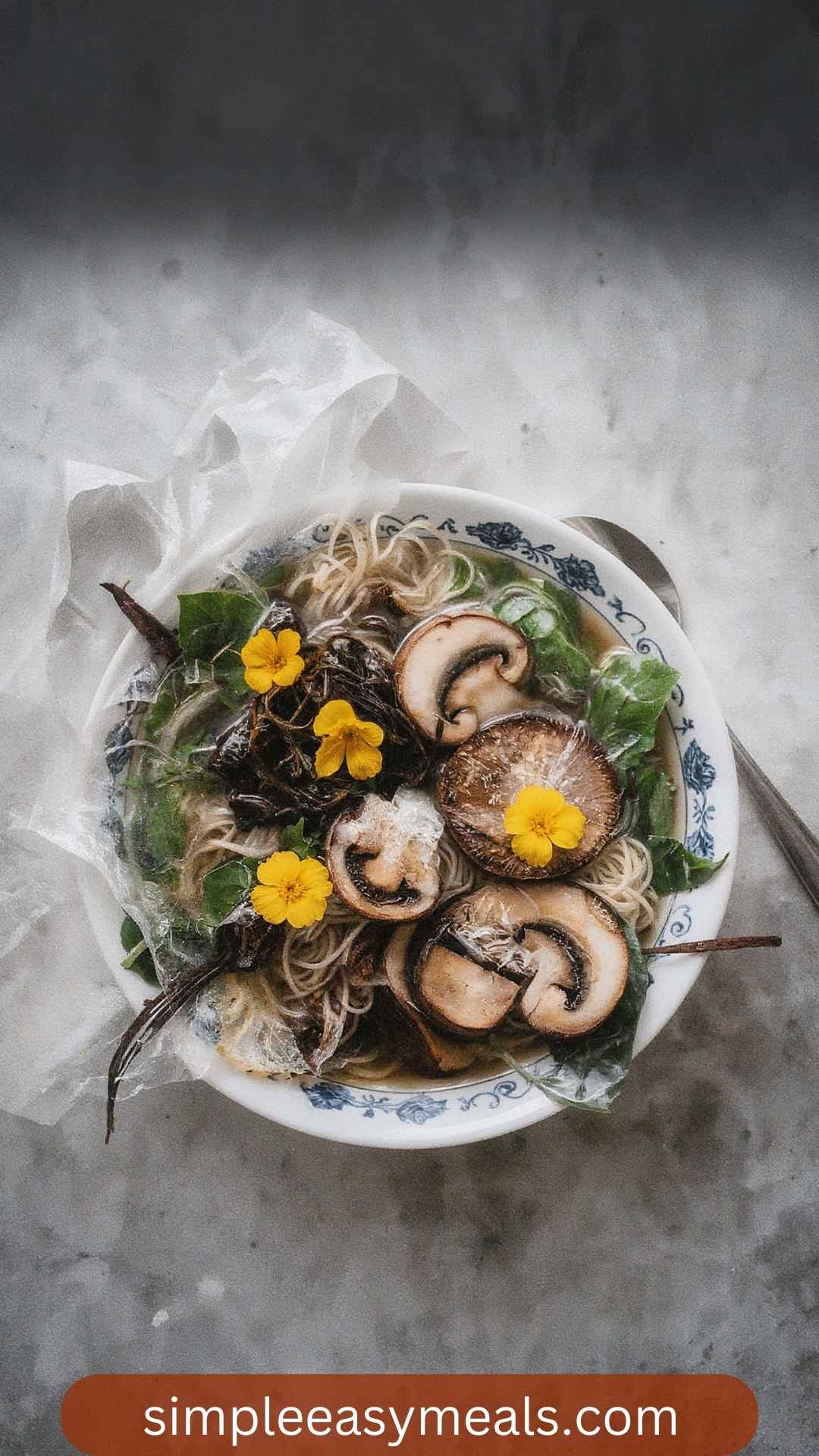
Directions
Now that you’ve gathered your ingredients, it’s time to cook!
Step 1: Sauté the Aromatics
Start by heating your olive oil in a large pot over medium heat. Once it’s shimmering, toss in the chopped onion. Sauté until it’s translucent, about 5 minutes. The scent? Heavenly.
Next, add your sliced garlic and ginger. Cook for an additional minute, stirring frequently. Trust me, your kitchen will smell like a restaurant.
Step 2: Cook the Mushrooms
Add the thinly sliced mushrooms to the pot. Sauté until they soften, about 5 minutes. The mushrooms will soak up those fragrant juices. You can almost see the flavor unfolding right before your eyes.
Step 3: Spice it Up
Sprinkle in the crushed red pepper flakes, stirring them into the mixture. If you like heat, feel free to add more! Then, add the kimchi along with its reserved juice. This will introduce a tangy, spicy bite you’ll love. Cook for another 2-3 minutes.
Step 4: Add the Stock
Pour in the vegetable stock. The mixture should come to a gentle simmer. This is where all those flavors meld together as the broth takes on the essence of the ingredients.
Step 5: Sweeten the Pot
Stir in the honey or brown sugar, ensuring it dissolves nicely. This sweetness balances the heat from the kimchi and red pepper flakes, creating a harmony in the soup that is just delightful.
Step 6: Broccoli, Miso, and Tofu
Add your broccoli florets and stir. Cook for about 3-4 minutes until they are vibrant in color but still crisp.
Now, whisk together the miso paste with a little hot broth from the pot to help dissolve it before adding it back in. This prevents clumps. If you’re using tofu, toss it in after the miso. Simmer for an additional 5 minutes, allowing everything to blend perfectly.
Step 7: Final Touches
Just before serving, drizzle the toasted sesame oil over the top for that nutty aroma. Taste the soup; adjust seasonings if necessary with soy sauce.
Notes
Here are some tips to ensure your kimchi soup turns out perfectly:
Use Fresh Kimchi: Freshly made kimchi yields the best flavor. If it’s too old, it might be overly tangy.
Adjust Spice Levels: If you’re unsure about the heat, start with less red pepper. You can always add more later.
Miso Paste Substitutes: If you don’t have miso, you could use soy sauce. It’s not the same, but it’s close!
Customize Your Veggies: Feel free to add any other vegetables like carrots or spinach.
If You Love Broth: Add more stock to make it soupier.
Storage Tips
This soup can be stored in an airtight container in the refrigerator for up to 3 days. Honestly, it tastes even better the next day as the flavors deepen. Just reheat gently on the stove.
You can also freeze the soup for up to a month. However, omit the tofu before freezing, as it can become spongy when thawed.
Nutrition Information
This recipe provides a balanced meal packed with nutrients. Each serving contains:
Calories: ~220
Protein: ~15g (especially if you include tofu)
Fat: ~10g (healthy fats from olive oil and sesame oil)
Carbohydrates: ~24g
Fiber: ~5g
Vitamins A and C: From the broccoli and kimchi.
Serving Suggestions
Want to make this meal even more exciting? Consider these serving ideas:
Garnish with Roasted Cherry Tomatoes: They add a delicious sweetness. Simply roast them with a drizzle of olive oil until they burst.
Include Toasted Sesame Seeds: They add crunch and richness. A sprinkle of sesame seeds goes a long way in enhancing the flavor.
Shredded Green Onions on Top: Adding fresh green onions gives a bright pop. They cut through the richness of the soup.
Squeeze of Lime or Lemon Juice: A squeeze of citrus brightens the flavors. It elevates the entire bowl, making it refreshing.
Serve with Steamed Rice: Create a complete meal. A bowl of fluffy rice on the side balances out out the spice.
What Other Substitutes Can I Use in Kimchi Soup?
Life happens, and that means ingredient swaps are sometimes necessary. Here are some ideas:
Brown Rice for White Rice: Brown rice offers more fiber. It changes the texture but remains nutritious.
Quinoa Instead of Tofu: For a nutty flavor and added protein. Quinoa can be a wonderful substitute if you’re looking to keep it gluten-free.
Regular Mushrooms for Shiitake: Shiitake mushrooms have a distinct umami flavor. They’ll deepen the broth’s richness.
Spinach or Kale Instead of Broccoli: Spinach wilts beautifully. If you love greens, toss them in towards the end.
Vegetable Broth for Water: If you need a vegetarian option. Vegetable broth will enhance the flavor compared to plain water.
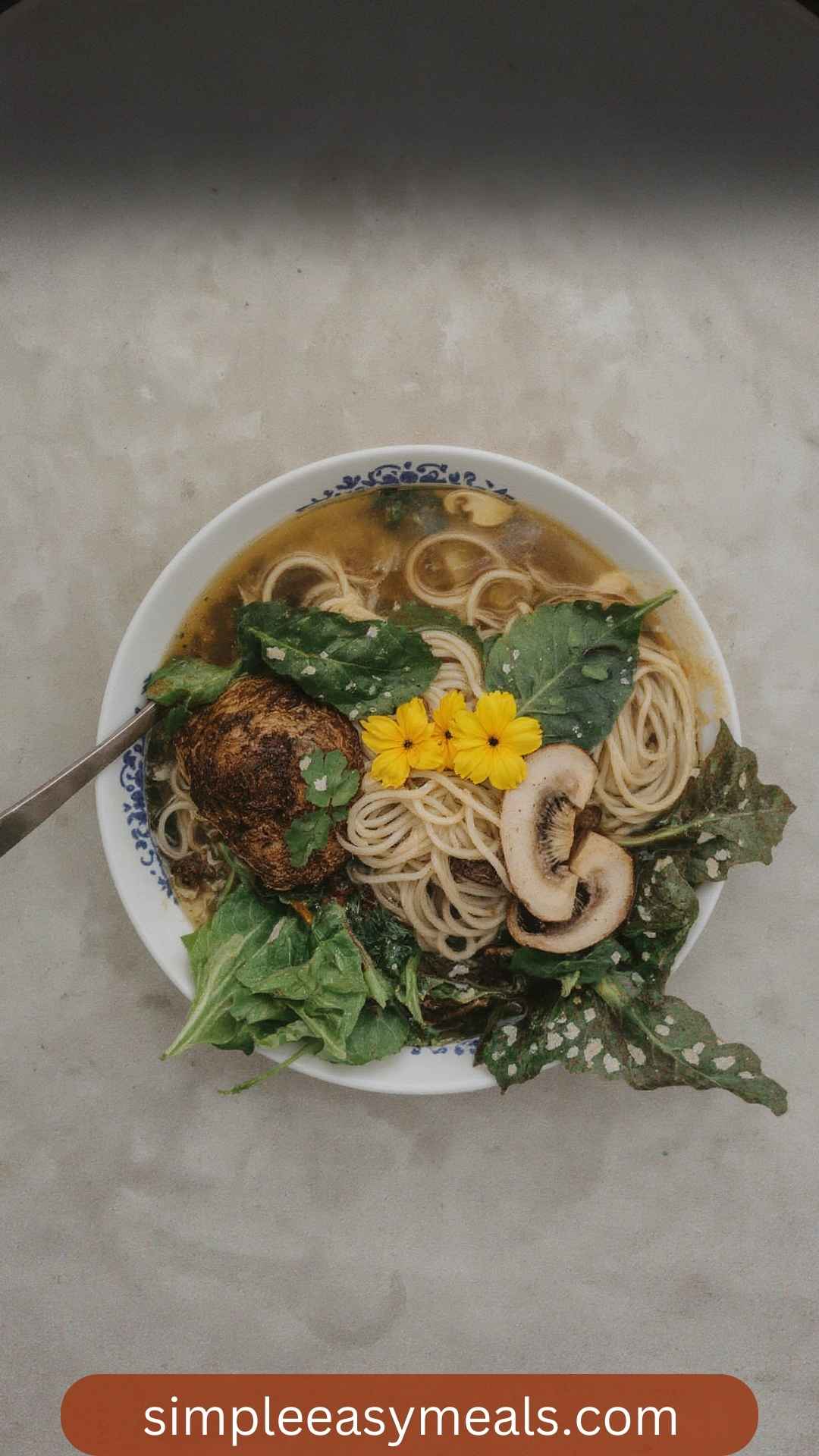
Conclusion
And there you have it—a hearty, nutritious, and downright delicious kimchi soup recipe that ticks all the boxes! Eating this soup feels like wrapping yourself in a warm blanket while enjoying the flavors of various ingredients dancing together in a comforting broth. Each spoonful tells a story of warmth, culture, and home.
Grab your ingredients, invite a friend over, and create memories over a boiling pot of kimchi soup. Whether you’re new to Korean cuisine or a seasoned pro, this dish is sure to impress. Enjoy!
You’ll also like the following Recipes!
Kimchi Soup – Simple Easy Meals
Welcome to my kitchen, where I’m excited to share one of my favorite dishes: kimchi soup! This hearty, spicy soup comes straight from Korean cuisine and is perfect for those chilly evenings. Trust me, there’s something inviting about a steaming bowl of kimchi soup that warms the soul. Imagine sitting back, savoring that umami-laden broth, while the flavors explode in your mouth.
Kimchi soup isn’t just a meal; it’s an experience. I can recall the first time I tasted it; the flavors were so vibrant that even the air around the bowl seemed to have a zing to it. After countless experiments and tweaks in my own kitchen, I’ve finally perfected my recipe.
So, why share this recipe? Because food is meant to be shared, celebrated, and, most importantly, enjoyed. Grab your ingredients, and let’s get cooking!
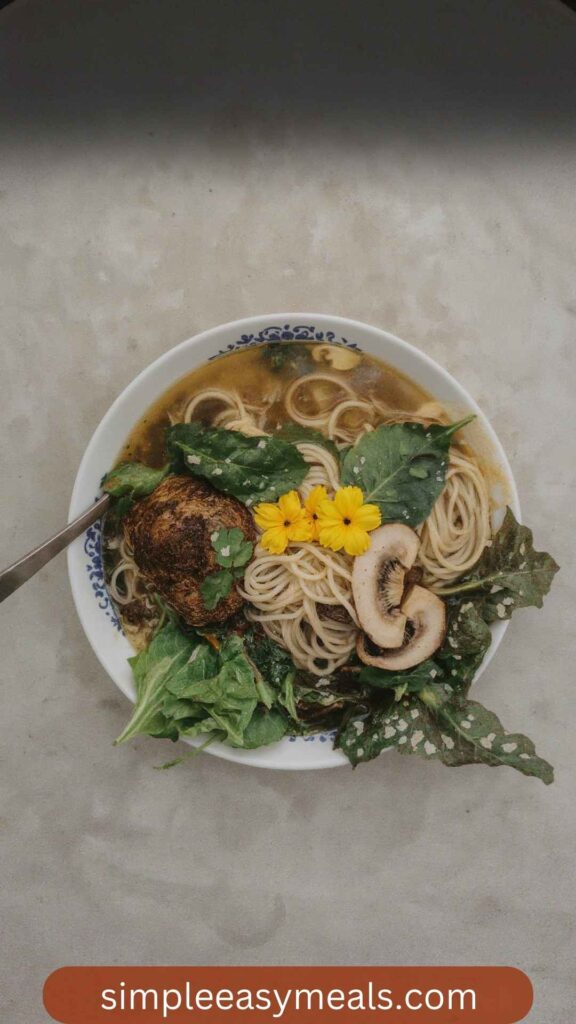
Ingredients
To Serve You Will Need
Instructions
Step 1: Sauté the Aromatics
-
tart by heating your olive oil in a large pot over medium heat. Once it’s shimmering, toss in the chopped onion. Sauté until it's translucent, about 5 minutes. The scent? Heavenly.
Next, add your sliced garlic and ginger. Cook for an additional minute, stirring frequently. Trust me, your kitchen will smell like a restaurant.
Step 2: Cook the Mushrooms
-
Add the thinly sliced mushrooms to the pot. Sauté until they soften, about 5 minutes. The mushrooms will soak up those fragrant juices. You can almost see the flavor unfolding right before your eyes.
Step 3: Spice it Up
-
Sprinkle in the crushed red pepper flakes, stirring them into the mixture. If you like heat, feel free to add more! Then, add the kimchi along with its reserved juice. This will introduce a tangy, spicy bite you’ll love. Cook for another 2-3 minutes.
Step 4: Add the Stock
-
Pour in the vegetable stock. The mixture should come to a gentle simmer. This is where all those flavors meld together as the broth takes on the essence of the ingredients.
Step 5: Sweeten the Pot
-
Stir in the honey or brown sugar, ensuring it dissolves nicely. This sweetness balances the heat from the kimchi and red pepper flakes, creating a harmony in the soup that is just delightful.
Step 6: Broccoli, Miso, and Tofu
-
Add your broccoli florets and stir. Cook for about 3-4 minutes until they are vibrant in color but still crisp.
Now, whisk together the miso paste with a little hot broth from the pot to help dissolve it before adding it back in. This prevents clumps. If you're using tofu, toss it in after the miso. Simmer for an additional 5 minutes, allowing everything to blend perfectly.
Step 7: Final Touches
-
Just before serving, drizzle the toasted sesame oil over the top for that nutty aroma. Taste the soup; adjust seasonings if necessary with soy sauce.
Nutrition Facts
Servings 4
- Amount Per Serving
- Calories 200kcal
- % Daily Value *
- Total Fat 10g16%
- Total Carbohydrate 4g2%
- Dietary Fiber 5g20%
- Protein 15g30%
* Percent Daily Values are based on a 2,000 calorie diet. Your daily value may be higher or lower depending on your calorie needs.
Note
- Use Fresh Kimchi: Freshly made kimchi yields the best flavor. If it’s too old, it might be overly tangy.
- Adjust Spice Levels: If you’re unsure about the heat, start with less red pepper. You can always add more later.
- Miso Paste Substitutes: If you don’t have miso, you could use soy sauce. It’s not the same, but it’s close!
- Customize Your Veggies: Feel free to add any other vegetables like carrots or spinach.
- If You Love Broth: Add more stock to make it soupier.




